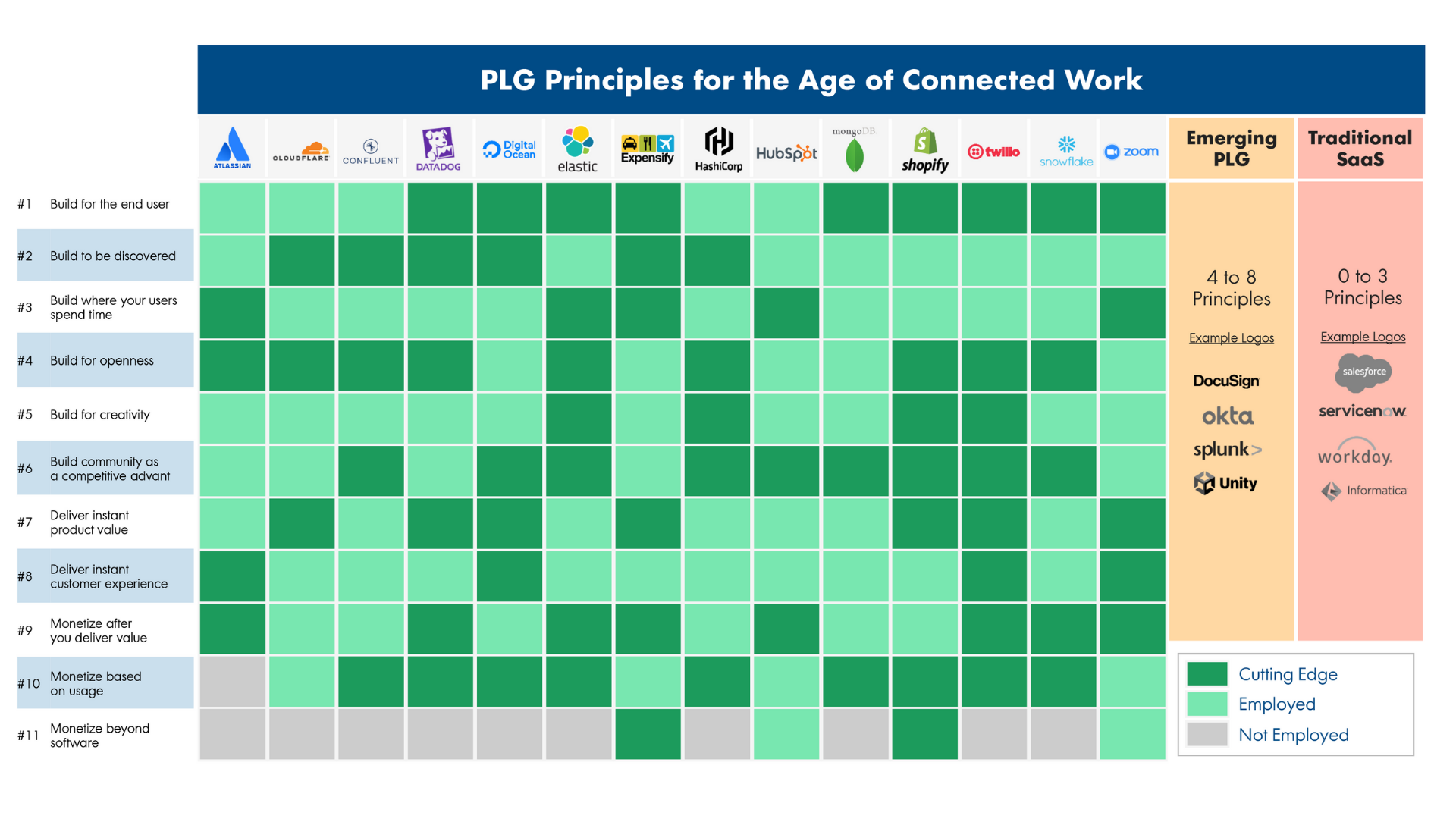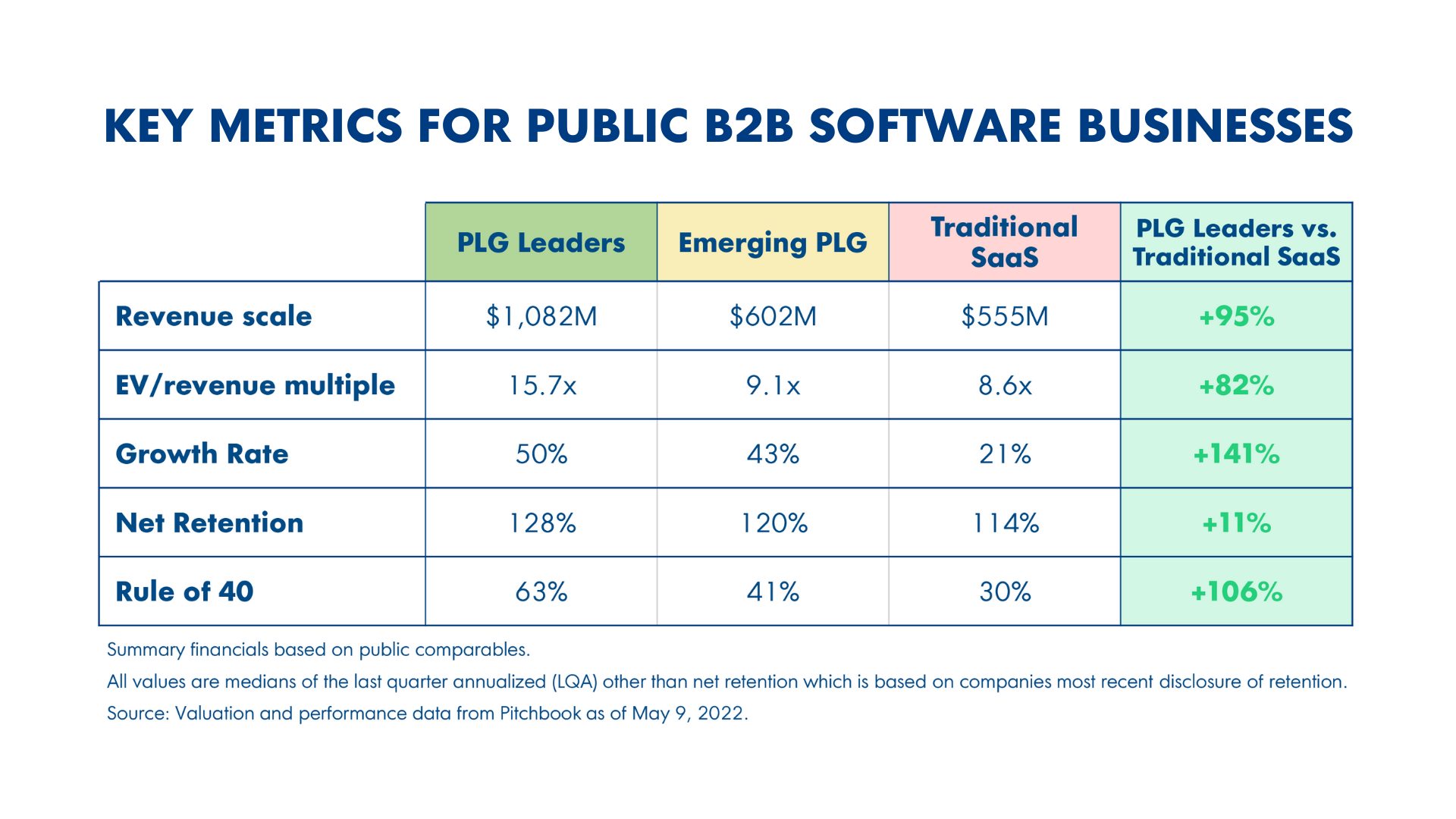Companies are valued based on metrics. Those with better metrics are valued higher, and those with worse metrics are valued lower.
None of this is controversial, but it’s also not helpful for getting started — metrics alone don’t help you build a business. They can help you set targets, but they do little to help you hit those targets.
What if startups reverse-engineered the whole thing and started by thinking about what successful companies are doing to drive their success. If startups begin by focusing on the tactics successful companies are using, can they tie those to the metrics they help elevate? And if builders follow enough of those tactics and improve enough of those metrics, can they then achieve the valuations of the leaders they want to emulate?
If you want to be a product that’s consistently attracting new logos, you need to be discoverable.
Since the term “product-led growth” (PLG) was first coined in 2016, the startup community has focused on answering these questions. PLG is defined as a growth model where product usage drives customer acquisition, retention and expansion, and it has always been focused on developing for the end user. But as end users have seen their lives and how they work change over the last three years, the tactics companies employ to enable PLG are changing.
Here are 11 principles that can guide readers to find success, even in unstable markets:

Image Credits: OpenView
Those on the cutting edge, “PLG leaders,” are those using more than nine of these product-led principles, and those that follow very few (or none) of them are labeled “Traditional SaaS.”

Image Credits: OpenView
Across the board, the variance in metrics is stark. PLG Leaders have achieved 95% more revenue scale while still growing 141% faster than their peers, retaining 11% more of their revenue and staying more than twice as efficient when it comes to the Rule of 40.
It’s not shocking that all of this leads to 82% higher multiples, but what exactly are they doing?
Building to be discovered
Products today aren’t pitched, they’re discovered. They don’t enter a business from the briefcase of a sales rep to an executive who cries for adoption on an all-hands training session. They are found by ordinary folks who are seeking to solve everyday problems through Google, communities or friends — this is where the new user journey starts.
from TechCrunch https://ift.tt/UADs2V6
via Tech Geeky Hub


No comments:
Post a Comment